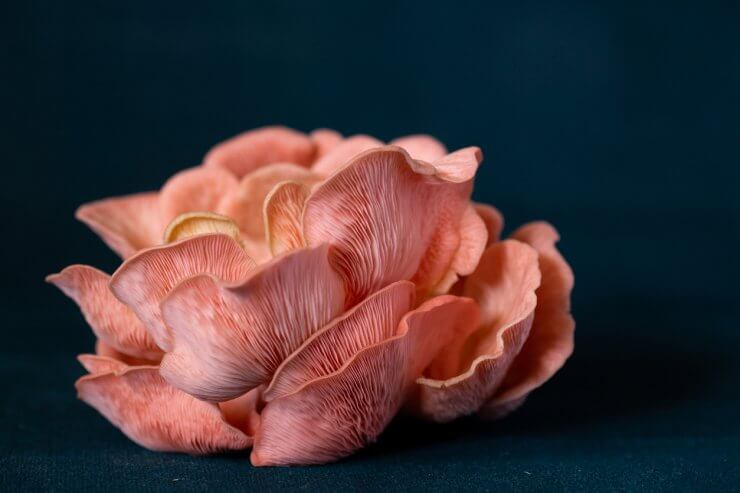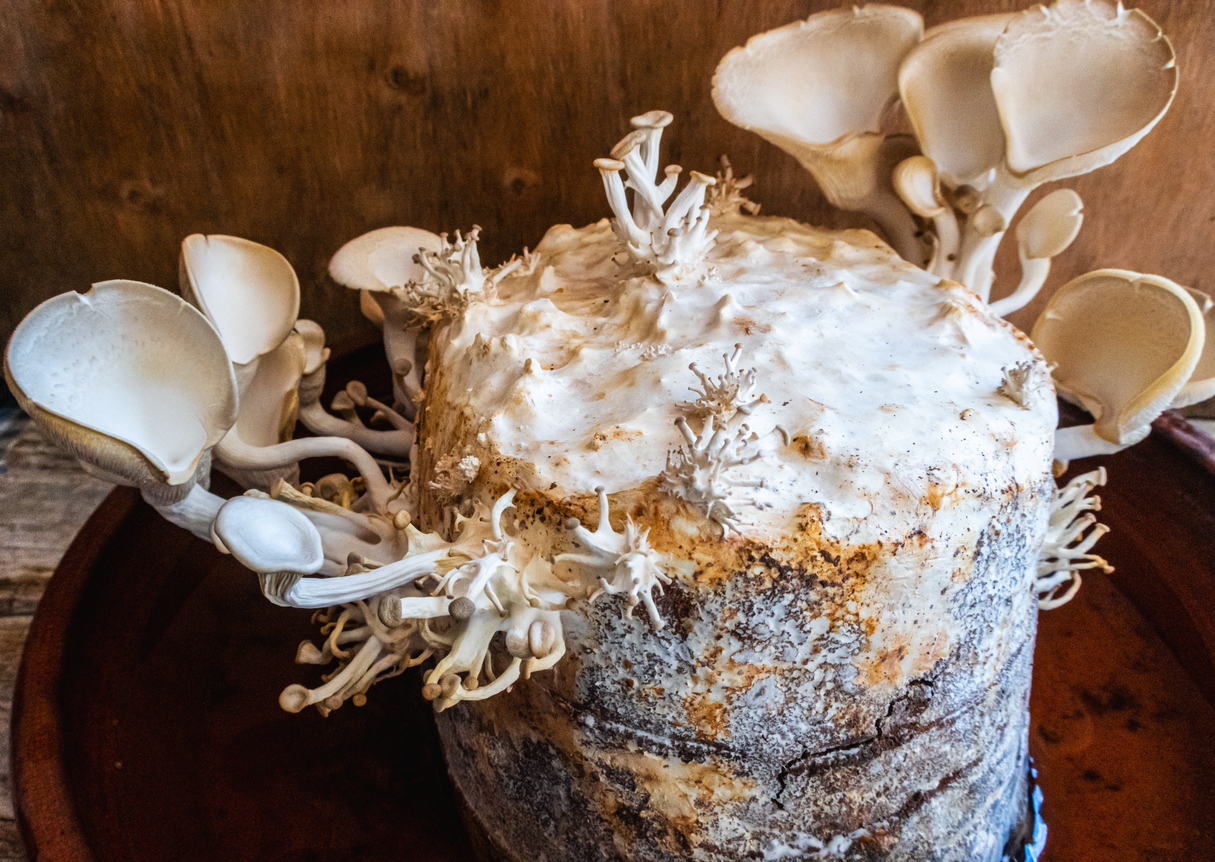
Pink Oyster Mushroom
I love mushrooms. There’s nothing like some grilled Lobster mushrooms as a side or Lion’s Mane mushrooms cooked in a little olive oil. I’m also not much of a wild mushroom forager. I know people who are really good at it. I’m thankful for those people. It’s just not my favorite activity. If this sounds at all familiar, it might be time to think about growing your own indoor mushroom garden.
An indoor mushroom garden has several advantages, and some drawbacks, depending on your point of view. The biggest drawback is that you miss out on the thrill of the hunt. And given how expensive mushrooms can be at the market, mushroom foraging is an exciting way to save on your grocery bill, too.
However, when you grow your own mushrooms, you can plan for what you want, and you’re not at the whim of nature. Nor do you need to worry about accidentally harvesting the wrong mushrooms, since some varieties are poisonous. Plus, it’s a good conversation starter when you’re at one of those awkward PTA meetings.

Grow your own indoor mushroom garden
The easiest way to grow an indoor mushroom garden is to buy a kit. As you can imagine, these vary quite a bit in price and what you get for your money. Generally, you can expect a growing medium, which is most often a section of pre-drilled log or packed sawdust or straw, mushroom spores, and some form of moisture tent. For many of them, you just add water, and nature does the rest, and many of them will give you two or three harvests.
For the more adventurous, you can also take a DIY approach to starting an indoor mushroom garden. While different mushrooms have their own requirements, there are some general guidelines to follow.
- Keep your mushrooms in a dark, humid area. You can control the humidity with a cover or by keeping the soil moist with a spritzer or damp cloth. Basements are ideal, but any dark area should work.
- Start your mushrooms in an area around 70 degrees. Once the mushrooms spawn, lower the temperature to around 60 degrees.
- Use the right growing medium. Like vegetables and herbs, different mushrooms grow better when they have the right medium. Straw is a good general-purpose medium, and in fact, oyster mushrooms (which are some of the easiest to grow in an indoor mushroom garden) prefer sterilized straw. Shiitake mushrooms, on the other hand, require fresh wood or a block of sawdust. (By the way, shiitakes have a reputation as difficult to grow.)
As for that sterilized straw, it’s pretty easy to arrange. First, chop your straw into 4-6 inch pieces, then dampen it and place it in a bowl in your microwave for about two minutes until the water is gone. You’ll likely need to do this in several batches.
Alternatively, you can soak your straw in a pot of hot but not boiling water on the stovetop for about two hours. Fill the pot as much as you can with straw and make sure it is covered with water, then cook it with the lid on. In either case, let the straw cool and squeeze out excess water before using it. The straw should still be damp but not soaked.
Spread out your straw and mix in your mushroom spawn (which I’d recommend getting from a reputable supplier – Cornell University has a curated list of small farms where you can find mushroom supplies).
Tightly pack your treated straw into a clear plastic bag, close it, and then punch holes about 4 – 6 inches apart, so there is some oxygen.
Once the mycelium (the thread-like “roots” of the mushrooms) spread and most of your substrate has a white-ish appearance, begin misting the openings. When your mushrooms first appear, cover the bag with a moisture tent and continue misting once or twice per day to ensure a humid environment.
Your mushrooms should be ready to harvest in just a few days. In many cases, you can get three or four harvests per bag. So don’t toss that straw yet!
That’s lots of deliciousness from one indoor mushroom garden!
Have you grown mushrooms indoors? How was the process for you?


 Previous
Previous

